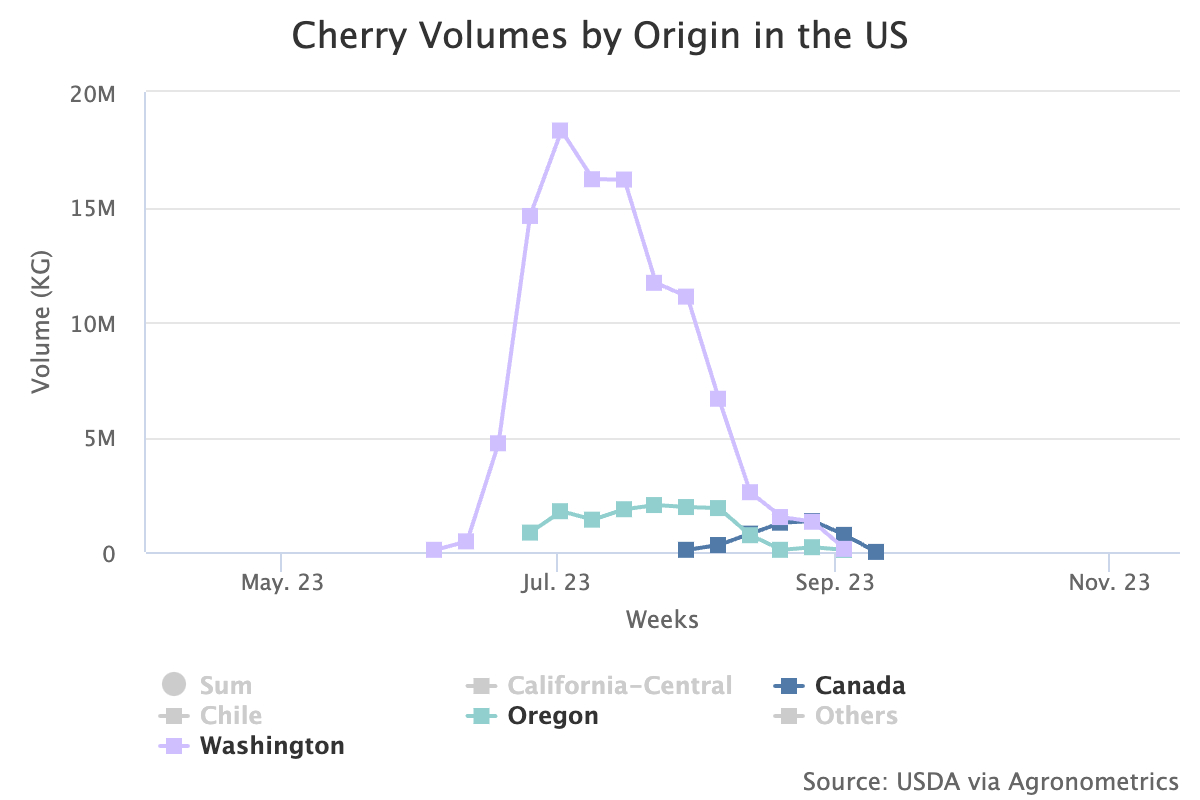The Chilean cherry campaign for 2025/26 is shaping up to be one of the most complex in recent years. After a record season with around 120 million boxes exported, the sector is now dealing with the consequences of overproduction, logistical problems, and increasing pressure on international markets.
Overproduction and logistical crisis
Last season’s production boom had unexpected side effects. Supply far outstripped demand, especially in the Chinese market – the main export destination – leading to a price collapse of up to 50%.
Worsening the situation was a symbolic incident: the Saltoro cargo ship, carrying over 1,300 containers of cherries, was stranded in the Pacific Ocean, causing critical delays during Chinese New Year and major financial losses, including the total spoilage of the shipment.
Logistics reorganization
Handling peaks of up to 6,800 containers per week requires an immediate upgrade of logistics infrastructure and specialized personnel. The shortage of refrigeration technicians and adequate facilities is becoming a bottleneck for the entire sector.
Stop to non-competitive fruit
For the current season, experts are sending a clear message: stricter selection of fruit for export is essential. Only cherries meeting high quality standards should be allowed to cross borders.
At the same time, it is crucial to reduce dependency on China by focusing on emerging markets such as the United States, Europe, India, and the Middle East. While growing, these destinations do not yet compensate for China's dominance.
Towards a new strategy
As Víctor Catán, president of Fedefruta, emphasizes, the industry must redefine its priorities. Differentiation must be based on quality, environmental sustainability, targeted promotional campaigns, and unified certifications.
A uniform quality system, more accurate harvest planning, and better coordination among all stakeholders in the supply chain will be essential.
A future to rebuild
The future of Chilean cherries hinges on a delicate balance between volume and value. It will require infrastructure investments, institutional support, and, above all, stronger collaboration among producers, exporters, shipping companies, and the government.
Only through such efforts can Chile maintain its global leadership in the sector and ensure the economic sustainability of its production.
Source: masp-lmneuquen-com
Image source: Fedefruta
Cherry Times – All rights reserved












